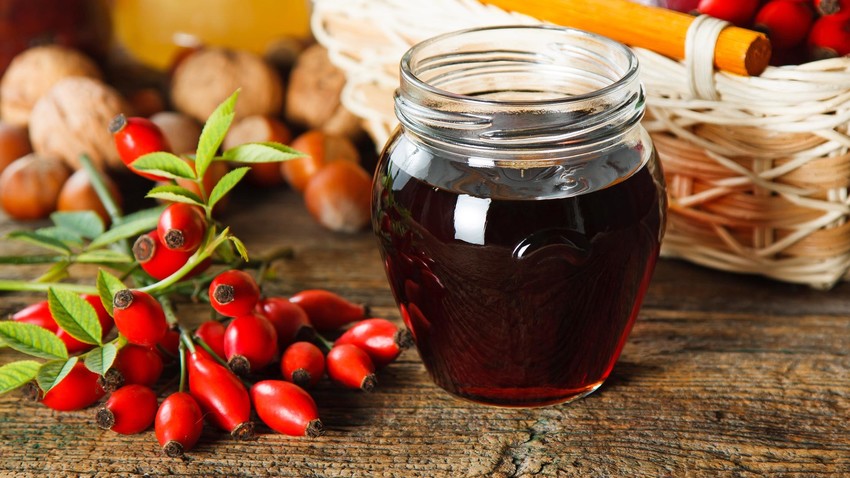
You'll be singing, “It’s raining rose hip jam!” in the kitchen this weekend!
Legion MediaIn late autumn, rose hips peep out at us from behind leafless bushes and bring joy to our eyes with their bright red berries. In cities, it’s difficult to find these berries, but in the countryside, it’s as easy as a pie.
I still remember the time when I was a kid and fell ill, so my mum would pour a spoonful of thick and dark rose hip syrup from a small bottle bought at the pharmacy and would make me drink it – so fragrant and sweet, the syrup was almost like honey. And, now, I suggest that we stock up on some small jars of tasty and healthy rosehip jam for the winter, that you can open it anytime you feel you’re getting a cold or if you simply want to boost your immune system.
Rose hips are known for their rich content of vitamin A, E and C and are especially beneficial in colds and flu prevention as they help to fight diseases. That’s why rose hip jam is considered one of the healthiest and, when properly prepared, is no less delicate and tasty dainty than other types of berry jam.
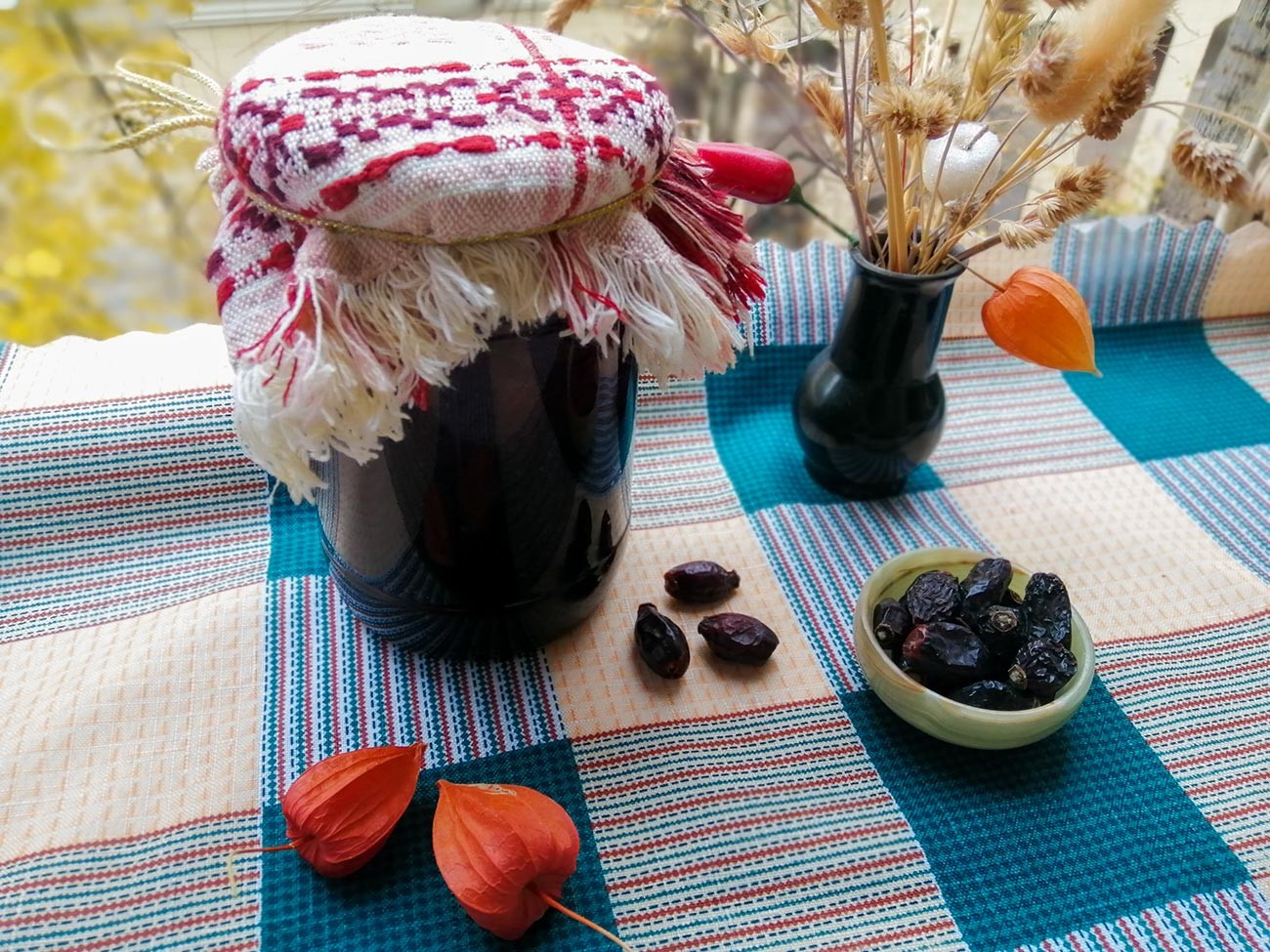
1. An ideal jam can only be made from fruits of the same ripeness. Remember that ripe berries are softer, sweeter and more brightly coloured.
2. The second significant factor is the cooking utensils you choose. Don’t take copper or aluminium cooking pots. An ideal option is enamelled cooking pots, but you can also use stainless steel pots. To prevent jam from burning, give preference to cooking pots with flat, thick bottoms and fill them by about a third so that the berries will boil evenly.
3. Thirdly, there are some fruits that require pre-cooking. Large fruits such as apples and pears need to be scalded or boiled for a short time in boiling water before cooking. In order to prevent apricots and plums from overboiling, they must be soaked for 5 minutes in a soda solution. In order to retain the shape of berries and fruits with hard skin (plums, gooseberries, pears, etc.) so that their skin doesn’t burst, pierce it with a toothpick in several places before cooking.
4. The last, but not the least, key thing is the ability to determine the readiness of the jam. Put a little jam in a teaspoon and drip onto your thumbnail. If the drop remains round and doesn’t change its form – the jam is ready.
As Anton Chekhov once said: “Knowledge is of no value unless you put it into practice,” so I suggest now getting down to the process of cooking a rosehip jam.
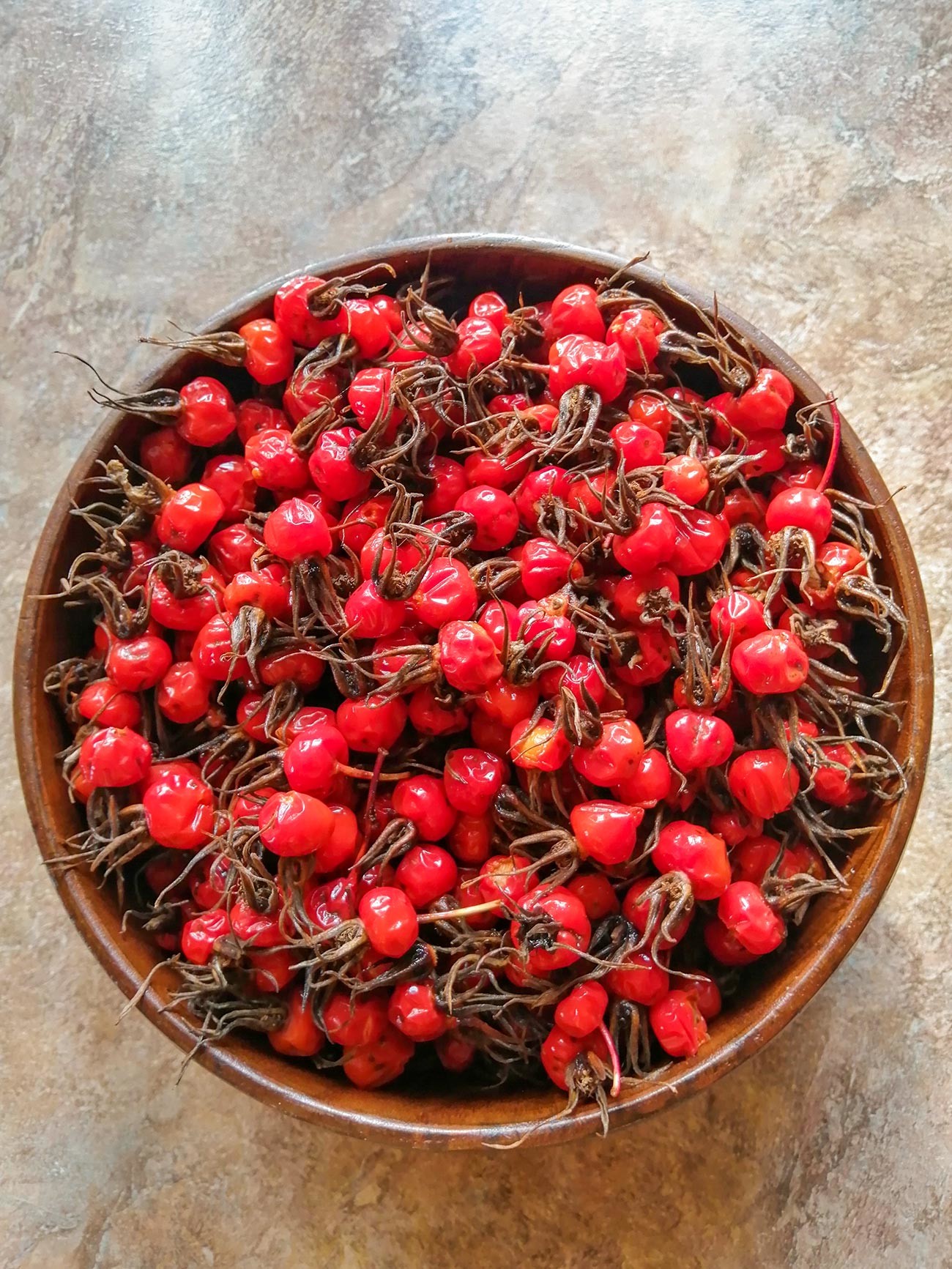
1. Remove the seeds that are inside of every rose hip. Personally, I didn’t remove it, as I picked up my rose hips in the forest nearby my village. So, as the berries I picked up were wild and tiny, I decided to leave the seeds. But if you don’t take wild rose hips, I recommend you use the following technique: wash and dry rose hips and then cut the end and the tail off each one, open it and remove all sticky seeds.
2. Dissolve the sugar in hot water, bring to a boil with constant stirring and pour hot syrup into a large cooking pot with the processed rose hips in it. Leave it until the next day.
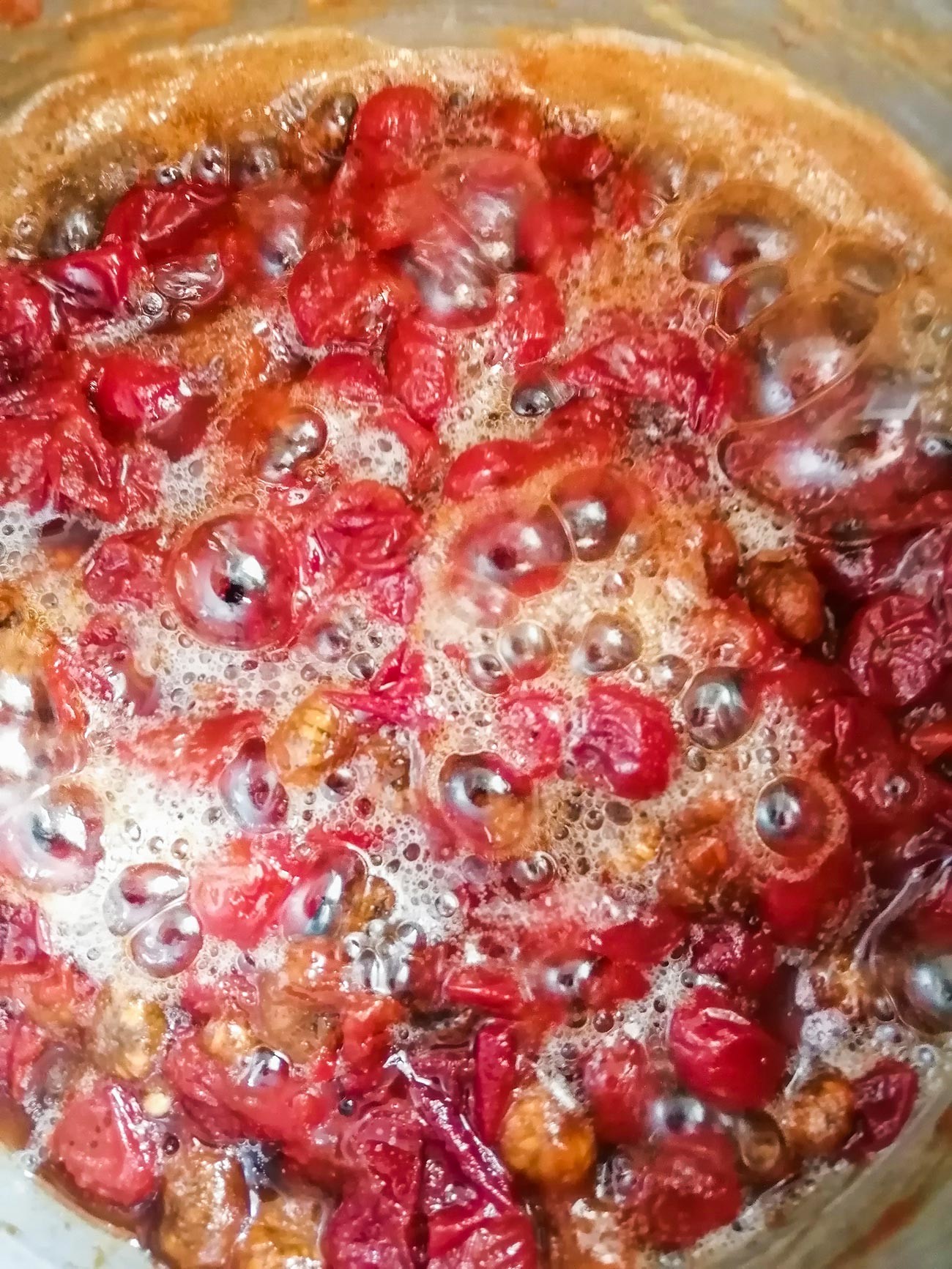
3. The following day bring the rose hips to a boil again, reduce heat to simmer and cook them for 5 minutes or until rose hips are completely soft.
4. Sterilise jars. You can do it in a classical way with water: pour boiling water in a clean jar, cover it with a lid and leave it for 8-10 minutes. Or sterilise them in the microwave: pour some water (about ½ inch) into a clean jar and put it in the microwave for 2 minutes.
5. Fill the sterilised jars with the jam, leaving a bit of room on the top. Wipe rims and place new sterilised lids on, being sure not to tighten the ring too much. Cover up the jars with a few towels to allow the jam to cool down slowly, after at least 12 hours your rose hip jam is ready to be stored or eaten. Priyatnogo appetita!
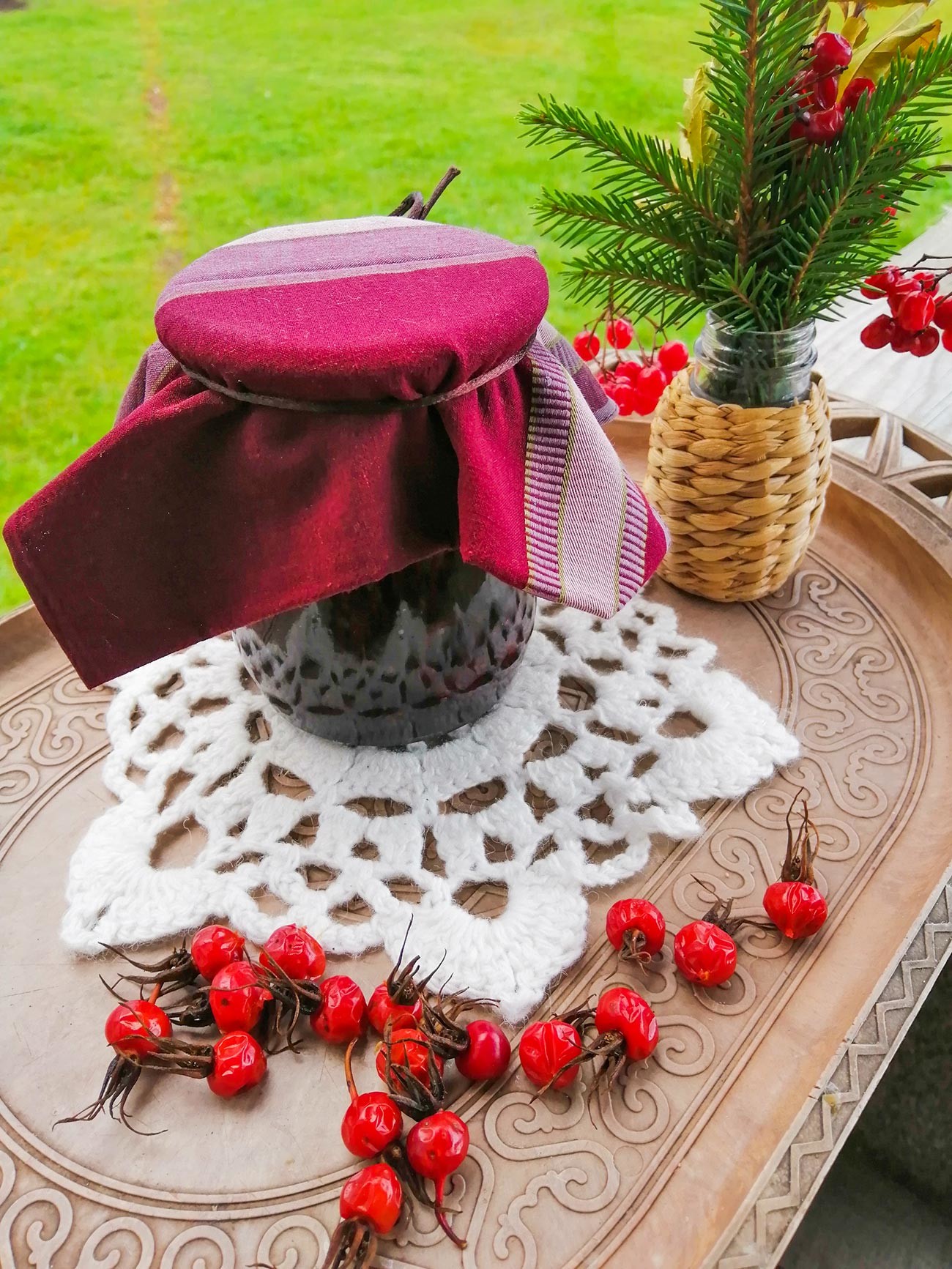
If using any of Russia Beyond's content, partly or in full, always provide an active hyperlink to the original material.
Subscribe
to our newsletter!
Get the week's best stories straight to your inbox